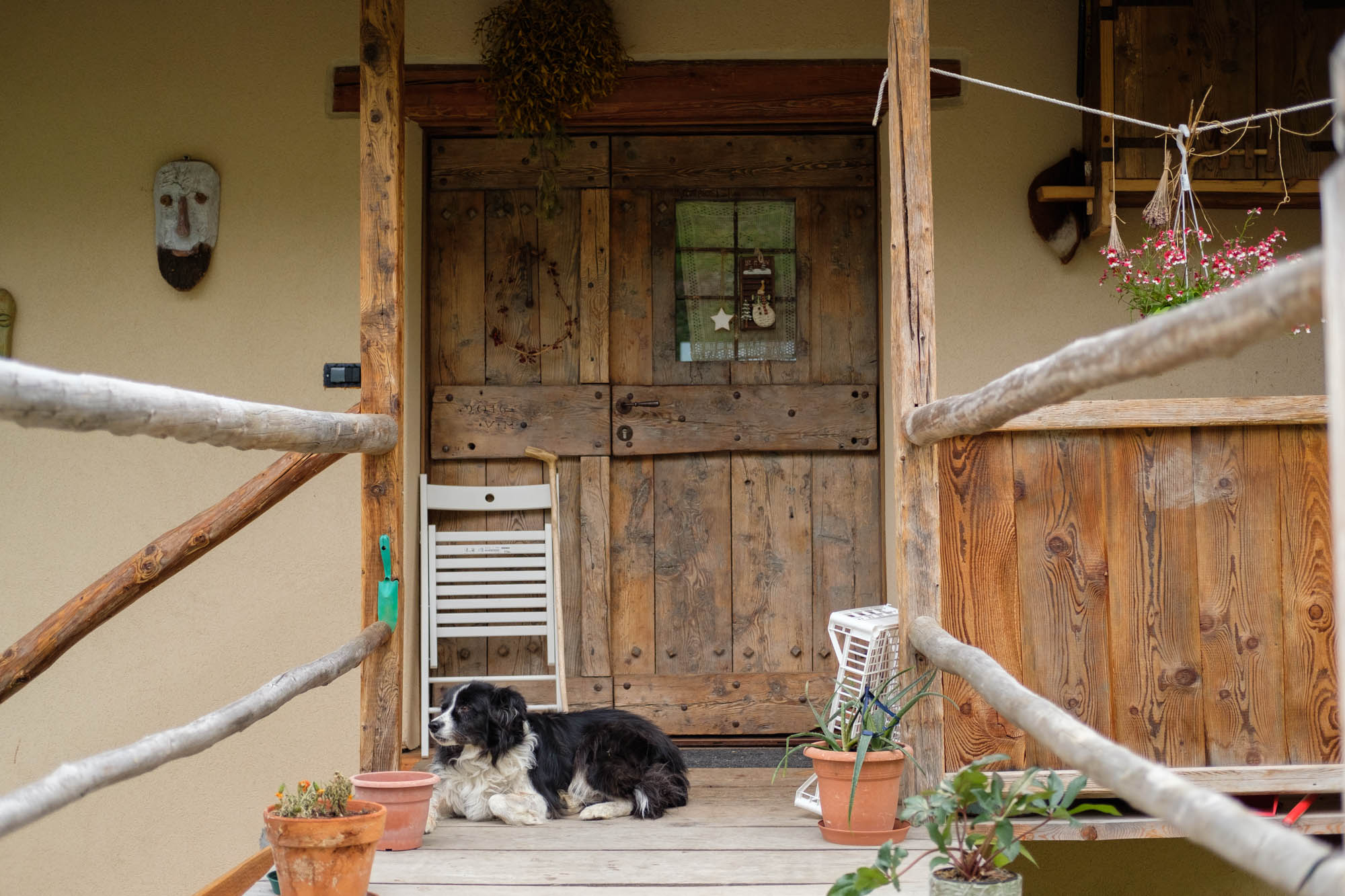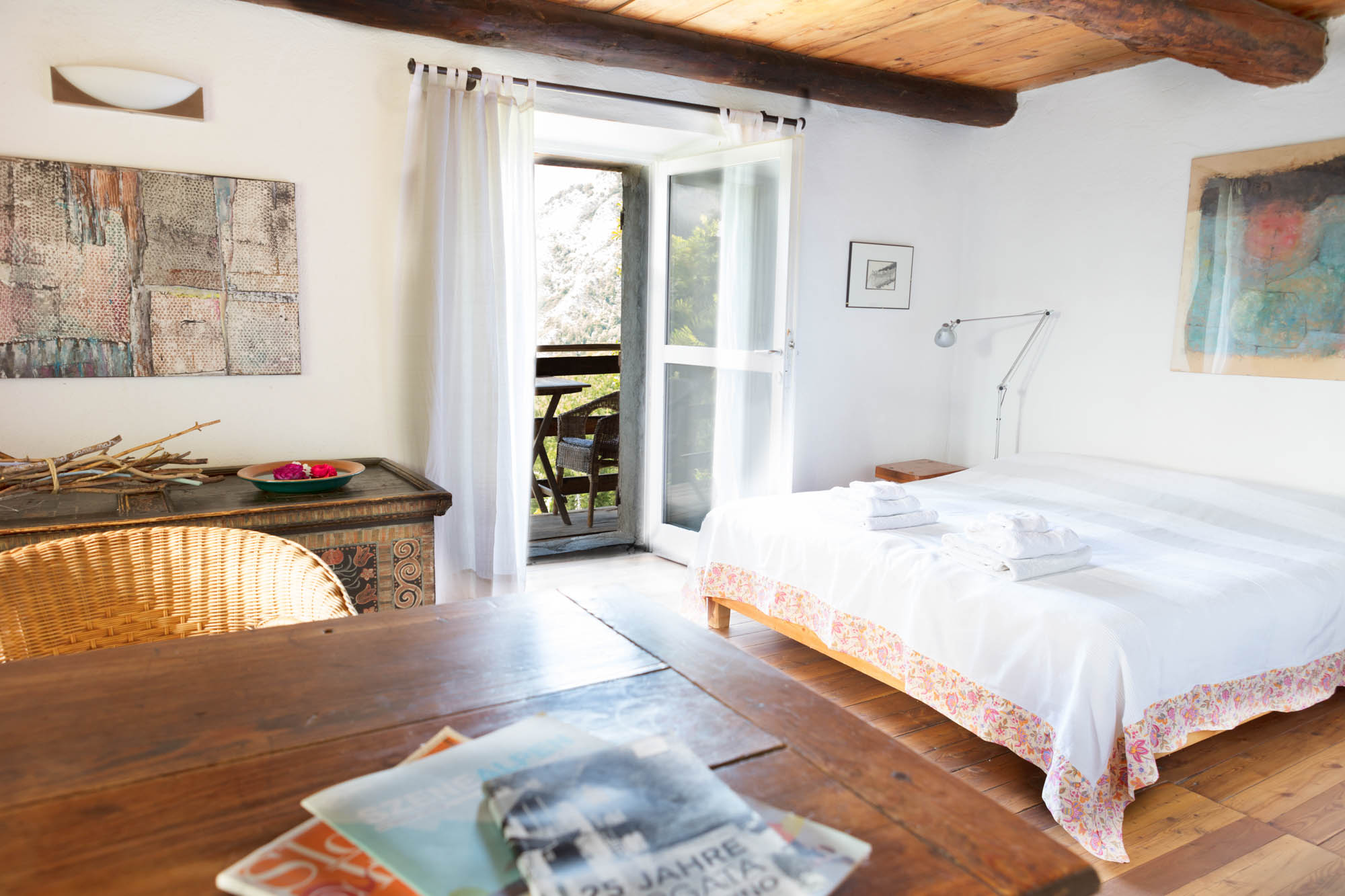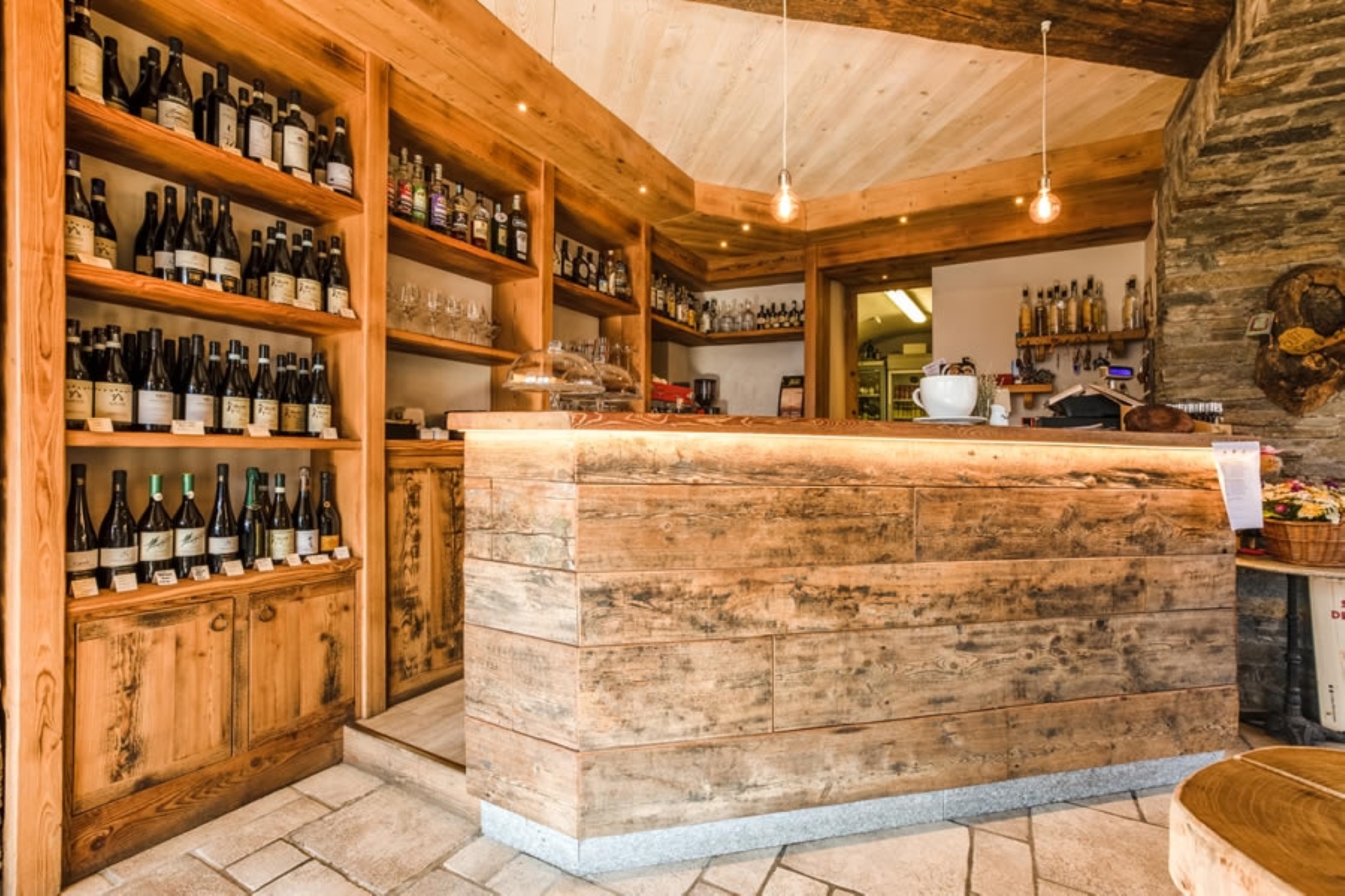Fifth stage
From Stroppo to Elva

The stage that leads to Elva, the most remote town in the valley, through ancient and panoramic mule tracks. An isolation that in the distant past protected it from raids by armies and to which still today we owe its discreet charm at the foot of the imposing Pelvo d’Elva.
Head up between the houses of Ruata Valle and follow the path marked with red notches. After passing the houses further up, follow the red marks on the left after 100 metres, avoiding the climb up to Morinesio (which is still worth a visit).
The mule track runs alongside some ruins and follows a stretch of hillside to join the tarmac road that climbs towards Morinesio. Go downhill for a few dozen metres and leave the tarmac road at the hairpin bend for the mule track that continues to the north.
After crossing a small bridge, you will reach the chapel of San Mauro, built on a terrace formed by the construction of a stone wall, just before upper Cucchiales.
Go left down to the main road. Follow it towards Elva, go around the Sarvanot dairy group of houses and, just beyond it, take the small grassy road that descends to the left. Change direction and cross the beautiful houses of Cucchiales sottano with their characteristic architectural features, where you will rejoin the original Occitan Trail route.
Go down the paved road towards the house further down the valley, and take the little path that closely follows the recesses of the mountain. About 100 metres further on, it is worth taking the turnoff (half an hour round trip) to the Cucchiales cave, known as the devil’s cave, a large underground chamber with large stalagmites arranged in a semicircle. It owes its name to the legend that a shepherdess who sought refuge here disappeared at the hands of the devil.
After returning to the mule track, walk in long semicircles and, after less than 2 kilometres of ups and downs, you will reach Ciamino, dominated uphill by a beautiful chapel dedicated to Saint Michael. Go around a house (fountain) on the right and walk for another kilometre and a half along the slightly uphill slope.
At a fork in the road, keep right and then left until you reach the tarmac road that joins the main road with the hamlet of lower San Martino. Follow the path to the left, go around a ridge, and you will reach the Centro culturale borgata San Martino stop point. This is where the Occitan Trails were created, thanks to the initiative of Maria and Arndt Lothar (Andrea) Schneider, German and Austrian, who came here by chance at the end of the 1970s: they fell in love with the valley and have never left it, becoming one of its greatest promoters.
Go straight on and turn right near an old oven. Go uphill on the paved path between the tastefully renovated houses, then emerge onto a mule track to the right to reach upper San Martino. Walk up between the houses with their modest architecture, huddled together, arrive at the museum and turn left. At the car park just above the hamlet, take the main road to the right on a level surface.
After 300 metres, leave it behind and turn left onto an old mule track that cuts across a long stretch and rejoins the tarmac road further up. The path continues to cross the tarmac road, cutting across its wide hairpin bends until, much higher up, at an altitude of around 1,800 m, it follows it to the right. Leave it after a few metres for a dirt road that goes uphill to the left, to the Bettone pass, at the foot of the characteristic mountain of the same name. Its name derives from “big beak”, as the shape of the summit suggests.
Continuing northwards and entering the town of Elva, follow the long semicircle, at first slightly downhill and then uphill, that leads to the San Giovanni pass (fountain), a wonderful scenic spot with a characteristic circular chapel, the highest point of this stage. A short detour to the left is a must, towards a vantage point just below and the famous Fremo di Cuncunà, literally “squatting woman”, a slab of rock jutting out into the void over the Elva valley.
Back at the little church of San Giovanni, take the wide forest track that descends northwards through a larch wood. At Grangia Varua, follow the dirt road to the right which, after a couple of long hairpin bends, leads to Isaia. Follow the mule track to the left, which eventually takes you through the houses of Mattalia, where you come out on the tarmac.
Follow the road for 800 metres, first slightly downhill and then uphill, which crosses a valley and leads to Serre, the central village of Elva. Here you will find the stop point and the much-photographed parish church of Maria Vergine Assunta, which dates back to the 13th century and has been restored over the centuries, with interesting artistic features.
Text and photos by Cuneotrekking.com
Information
- Ascent: 700 m
- Descent: 470 m
- Distance: 13.0 km
- Starting altitude: 1,384 m
- Max altitude: 1,875 m
- Difficulty: E (Hiking)
On the trail
Here are the points of support of this stage
















